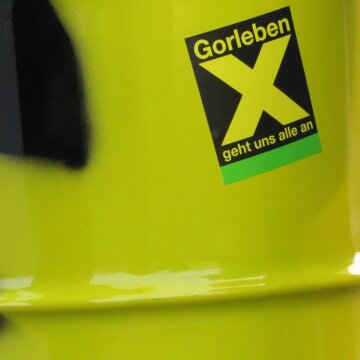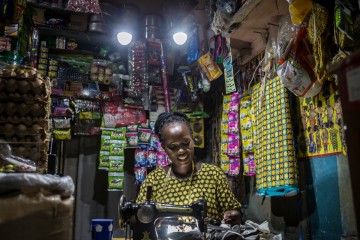- About
- Topics
- Story
- In-Depth
- Picks
- Opinion
- News
- Donate
- Signup for our newsletterOur Editors' Best Picks.Send
Read, Debate: Engage.
| topic: | Humans |
|---|---|
| located: | Germany |
| editor: | Gurmeet Singh |
What do you do with nuclear waste? Hazardous for tens of thousands of years once produced, this waste can’t simply be dumped anywhere. Germany is on the lookout for a spot. Deutsche Welle reports:
“BGE, the nation's waste management organization, named 90 areas around the country as possible candidates for the permanent waste disposal. It said in a long-awaited report that a location needs to be found by 2031. The aim is to start storing containers of radioactive waste at the site by 2050.
Germany is seeking a safe place to store 1,900 containers of waste. The containers make up only 5% of the country's nuclear waste but 99% of its radioactivity, according to BGE chairman Stefan Studt.
Regions in Bavaria and Baden-Württemberg in southern Germany, as well as Lower Saxony and states in eastern Germany, are among the potential waste disposal sites. The locations suggested "favorable geological conditions for the safe disposal of radioactive waste," the BGE said. The sites will now be vetted to account for other factors, including population density.”
The plans, commented Reuters, are in line with Germany’s efforts to decommission its nuclear sites.
World Nuclear News followed up:
“Steffen Kanitz, who is responsible for the site selection by BGE management, said: "The size of the sub-areas [for waste storage] makes it easy to see that we are still a long way from making a preliminary decision on a location. We are now looking forward to discussion with citizens and the specialist public about our results, our methods of applying the criteria of the Site Selection Act and working on new tasks with our committed team of scientists."
An interesting proposal from the BGE there; that finding a place for waste storage will need to be made in part through citizen dialogue. This proposal is probably considered mandatory after Germany’s history of anti-nuclear movements.
Reuters notes that the initially planned storage site is no longer under consideration. Gorleben was considered but rejected. It was also the focus of anti-nuclear protests in the 1970s as it was found to be geologically unstable, and thus unsuitable. Clean Energy Wire, writing about the entire process of finding a storage location, says:
“Previous attempts of storing low and medium-level nuclear waste have drawn large criticism and public discontent due to poor planning and execution. An exploration for a high-level waste repository in Gorleben, Lower Saxony, has been fraught with administrative flaws and opaque planning. To win back trust, the government in 2013 introduced the “Law for finding and choosing a nuclear waste repository”, followed by an expert commission which in 2016 delivered a plan on how the search for a repository should be conducted. One of the main and most important aspects of the plan: Germany must be a blank map, i.e., every region could potentially be suitable for a storage facility, ensuring that no communities or states were pre-selected. The salt mine of Gorleben did not meet the criteria of the BGE’s search and has now been excluded from the process.”
Known to cause severe damage and illness to human beings when improperly stored, nuclear waste is a substance that no one would want near them. Will the waste simply be stored in a former mine? Does that mean that the waste will most likely be stored in a deprived region? Will it therefore most likely be a problem for people in worse economic circumstances?
The exercise in finding a place to store nuclear waste in Germany will take public views into account, and thus actually provide a model of how the country should manage environmental issues in the future. The climate crisis will change everything, and affect everybody, but not equally. As such, public views about how to manage these changes will need to be heard. Since everything from electric vehicles to reduced energy consumption will be on the cards in the next few years, it’s going to be more and more important that citizens have a role in deciding what and how they want to manage in terms of the energy and climate crises.
Image by 2396521

